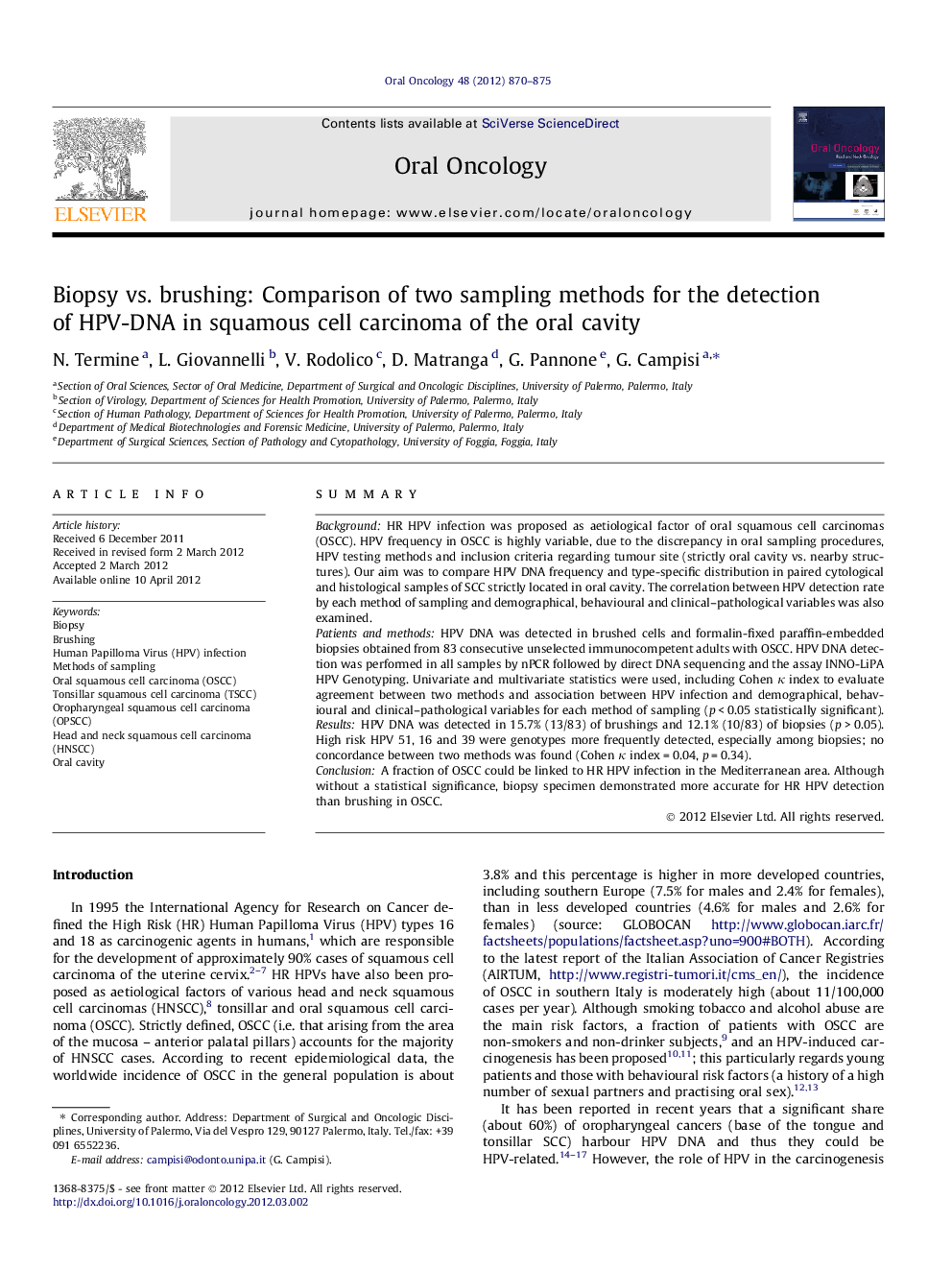| Article ID | Journal | Published Year | Pages | File Type |
|---|---|---|---|---|
| 3164113 | Oral Oncology | 2012 | 6 Pages |
SummaryBackgroundHR HPV infection was proposed as aetiological factor of oral squamous cell carcinomas (OSCC). HPV frequency in OSCC is highly variable, due to the discrepancy in oral sampling procedures, HPV testing methods and inclusion criteria regarding tumour site (strictly oral cavity vs. nearby structures). Our aim was to compare HPV DNA frequency and type-specific distribution in paired cytological and histological samples of SCC strictly located in oral cavity. The correlation between HPV detection rate by each method of sampling and demographical, behavioural and clinical–pathological variables was also examined.Patients and methodsHPV DNA was detected in brushed cells and formalin-fixed paraffin-embedded biopsies obtained from 83 consecutive unselected immunocompetent adults with OSCC. HPV DNA detection was performed in all samples by nPCR followed by direct DNA sequencing and the assay INNO-LiPA HPV Genotyping. Univariate and multivariate statistics were used, including Cohen κ index to evaluate agreement between two methods and association between HPV infection and demographical, behavioural and clinical–pathological variables for each method of sampling (p < 0.05 statistically significant).ResultsHPV DNA was detected in 15.7% (13/83) of brushings and 12.1% (10/83) of biopsies (p > 0.05). High risk HPV 51, 16 and 39 were genotypes more frequently detected, especially among biopsies; no concordance between two methods was found (Cohen κ index = 0.04, p = 0.34).ConclusionA fraction of OSCC could be linked to HR HPV infection in the Mediterranean area. Although without a statistical significance, biopsy specimen demonstrated more accurate for HR HPV detection than brushing in OSCC.
